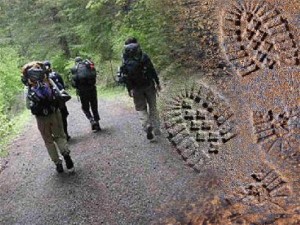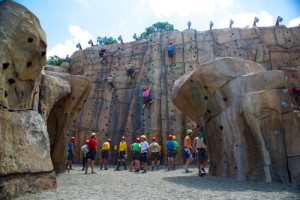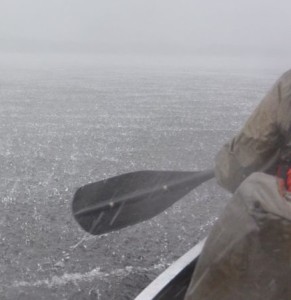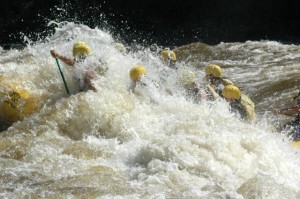Several outdoor program commentators characterize an outdoor program participant’s ability to function by relating their level of competence to the degree of difficulty of the activity, denoted as “operation zones“.
Such “operation zones” are defined as follows:

- The “boredom zone” – where the ability of the participant far exceeds that required by the difficulty of the activity (“a hike in the park on a paved path”);
- The “cruising zone” – where the ability of the participant is comfortably above that required by the difficulty of the activity (“a hike on an unpaved country lane”);
- The “peak experience zone” – where the ability of the participant matches the difficulty of the activity (“backpacking on the Appalachian Trail”);

- The “challenge zone” – where the ability of the participant is slightly below that required by the difficulty of the activity (“supervised climbing and rappelling on a rock face”);
- The “danger zone” – where the ability of the participant is far below that required by the difficulty of the activity (“free climbing during a storm”).
The transition between the “challenge zone” and the “danger zone” is stated to be the difference between the participant “pushing their limits” and “being out of control”. This transition can also occur, not only between activities, but during an activity.

For instance, canoeing on a large lake under calm, sunny conditions in canoes (“cruising zone”) can easily transition into the “danger zone” upon the arrival of a severe storm bringing high winds and waves – Northern Tier canoeists take note!
Alternatively, white water rafting can easily transition from a “cruising zone” to a “danger zone” once the inexperienced, youthful rafters enter significant rapids (note that the 2018 Guide to Safe Scouting requires a professional guide in each raft on Class IV rivers, and prohibits boating on Class V rivers).

It is important for a participant to recognize which “zone” applies prior to involvement in an outdoor activity, particularly for a wilderness activity.
It is also important to recognize when the group has transitioned from one “zone” to another during the activity, due to factors such as the environment, or physical condition.
Such recognition goes a long way toward enabling the participant to avoid any risk management issues during the contemplated activity which have the potential to adversely affect the participant’s well-being. This analysis applies not only to adult volunteers, but also to the Scouts themselves.
Indeed, adult volunteers can ensure that the participants (both adults and Scouts) to an activity (particularly Scouts) are able to operate in a “zone” most desirable for that activity by making available the necessary training and experience.
And, within a Scout unit, each participant’s (adults’ and Scouts’) skills and experience may place them within different “zones”, which differences need to be taken into account when planning and conducting the activity! For instance, a river canoe trip for some may be within their “cruising zone”, while for others it may be within their “peak experience zone” or their “challenge zone”.
But, hopefully, the unit can keep the participants out of their “danger zone”!
